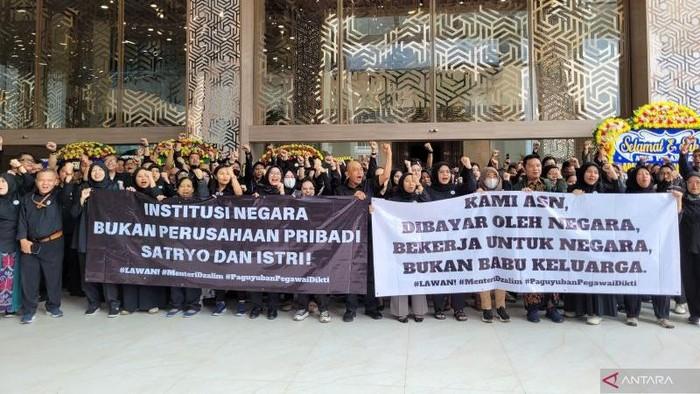- Home
- Kilas Global
- SonicWall: Record 304.7 Million Ransomware Attacks Eclipse 2020 Global Total in Just 6 Months
Selasa, 17 Agustus 2021 00:35:00
SonicWall: Record 304.7 Million Ransomware Attacks Eclipse 2020 Global Total in Just 6 Months

Ransomware showed massive year-to-date spikes in the U.S. (185%), U.K. (144%)
Ryuk, Cerber, SamSam top families of the year, making up 64% of all ransomware volume
Government, education, healthcare, retail verticals increasingly targeted by ransomware
Up 59% year-to-date globally, IoT malware continues growth since 2018
Cryptojacking malware remains a key threat, up 23% year-to-date globally and up 22% in the U.S.
SonicWall's patented RTDMI finding more never-before-seen malware than ever, posting a 54% year-to-date increase over the first half of 2020
SINGAPORE - 16 August 2021 - In the first half of 2021, ransomware attacks skyrocketed, eclipsing the entire volume for 2020 in only six months, according to the mid-year update to the 2021 SonicWall Cyber Threat Report published today. In a new paradigm for cybercrime, SonicWall is analyzing how threat actors are using any means possible to further their malicious intents.
With high-profile attacks against established technology and infrastructure, ransomware is now more prevalent than ever. Through the first half of 2021, SonicWall recorded global ransomware volume of 304.7 million, surpassing 2020's full-year total (304.6 million) - a 151% year-to-date increase.
"In a year driven by anxiety and uncertainty, cybercriminals have continued to accelerate attacks against innocent people and vulnerable institutions," said SonicWall President and CEO Bill Conner. "This latest data shows that sophisticated threat actors are tirelessly adapting their tactics and embracing ransomware to reap financial gain and sow discord. With remote working still widespread, businesses continue to be highly exposed to risk, and criminals are acutely aware of uncertainty across the cyber landscape. It's crucial that organizations move toward a modern Boundless Cybersecurity approach to protect against both known and unknown threats, particularly when everyone is more remote, more mobile and less secure than ever."
Ransomware running rampant
After posting record highs in both April and May, SonicWall recorded another new high of 78.4 million ransomware attacks in June 2021 alone. Ransomware volume showed massive year-to-date spikes in the U.S. (185%) and the U.K. (144%). Accounting for 64% of all recorded ransomware attacks, Ryuk, Cerber and SamSam were the top three ransomware families in the first half of the year, as recorded by SonicWall Capture Labs.
The top five regions most impacted by ransomware in the first half of 2021 were the United States, United Kingdom, Germany, South Africa and Brazil. Across the U.S., the five hardest-hit states were Florida (111.1 million), New York (26.4 million), Idaho (20.5 million), Louisiana (8.8 million) and Rhode Island (8.8 million).
"The continued rise of ransomware, cryptojacking and other unique forms of malware targeted at monetization, along with their evolution of tactics, are evidence that cybercriminal activity always follows the money and rapidly adapts to new opportunities and changing environments," said SonicWall Vice President of Platform Architecture Dmitriy Ayrapetov.
In line with spikes in global data, SonicWall Capture Labs threat researchers also recorded alarming ransomware spikes across key verticals, including government (917%), education (615%), healthcare (594%) and retail (264%) organizations.
Patented RTDMI finding, blocking more never-seen-before variants than ever
In the fight against known and unknown threats, SonicWall's patented Real-Time Deep Memory InspectionTM (RTDMI) identified record numbers of never-before-seen malware, posting a 54% year-to-date increase over the first half of 2020.
RTDMI technology blocks more advanced and unknown malware compared to traditional behavior-based sandboxing methods, and with a lower false-positive rate. This can be seen in the latest ICSA Labs Advanced Threat Defense (ATD) Q2 test results, where the SonicWall Capture Advanced Threat Protection (ATP) service with RTDMI detected 100% of previously unknown threats with zero false positives across 33 consecutive days of testing.
In its most recent test administered in the second quarter of 2021, ICSA conducted a total of 1,144 tests against Capture ATP, with a mixture of 544 new and little-known malicious samples and 600 innocuous applications. Capture ATP correctly identified 100% of malicious samples while allowing all clean samples through. It was the sixth consecutive ICSA ATD certification for Capture ATP, and second 'perfect score' in as many quarters.
"Third-party validation is hard earned, particularly in today's fast-moving threat landscape," said SonicWall Vice President of Software Engineering & Threat Research Alex Dubrovsky. "Consecutive perfect certifications is a testament to the SonicWall team and our continued quest to arm organizations with intelligence and technology that help protect them from the most dangerous cyber threats."
Malware continues to fall, non-standard port attacks down
Last year, SonicWall recorded a drop in global malware attacks, a trend that continued in the first half of 2021 with a 24% drop in malware volume worldwide. As threat actors become more sophisticated - using ransomware, cryptojacking and other types of cyberattacks to launch surgical strikes - the need for "spray-and-pray" malware attempts have lessened, decreasing overall volume.
Malware attacks via non-standard ports also fell in 2021 after hitting record highs in 2020. These attacks, which aim to increase payloads by bypassing traditional firewall technologies, represent 14% of all malware attempts in the first half of 2021, down from 24% year to date.
Debasish Mukherjee, Vice President, Regional Sales APAC adds "The pandemic drove the effectiveness and volume of cyberattacks to historic highs. Remote workforces, a charged political climate, record prices of cryptocurrency, and threat actors weaponizing cloud storage and tools created new and numerous attack vectors on targets. Threats that were once thought to be two or three years away are now a reality with do-it-yourself, cloud-based tools creating an army of cybercriminals armed with the same devastating force and impact of a nation-state or larger criminal enterprise." He continues "It's imperative the IT industry stay ahead of these mounting threats, strengthen relationships between private and government sectors, and formulate more coordinated efforts to swiftly share threat intelligence and act upon it." (*).











